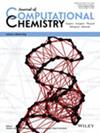通过多尺度理论计算揭示化学机械抛光的微观机理。
IF 4.8
3区 化学
Q2 CHEMISTRY, MULTIDISCIPLINARY
引用次数: 0
摘要
化学机械抛光(CMP)是一种化学反应与机械磨削相结合的关键平面化技术。然而,在微观水平上分析其潜在机制,特别是在晶圆表面,仍然是一个重大挑战。本文着重从微观机理的理论研究出发,系统综述了基于密度泛函理论(DFT)的量子化学和基于牛顿力学的分子动力学(经典MD/反应MD/从头算MD)在预测反应活性和分析界面行为方面的应用。DFT计算可以有效地定位活性位点,揭示成键性质;MD模拟实现了从吸附构型到反应路径的跨越,但面临时间尺度有限、计算成本高等挑战。因此,针对CMP复杂求解环境的精确力场开发、DFT计算与MD仿真的结合以及机器学习MD的应用将成为CMP理论计算的突破点。理论计算与实验的深度融合,将颠覆传统的CMP试错研发模式,在计算机软件中实现“分子设计-性能预测-缺陷检测”的全过程数字链,有望加速半导体等精密制造领域的绿色革命。本文章由计算机程序翻译,如有差异,请以英文原文为准。
Unveiling Microscopic Mechanisms of Chemical Mechanical Polishing via Multi-Scale Theoretical Calculations.
Chemical mechanical polishing (CMP) is a critical planarization technique that combines chemical reactions and mechanical grinding. However, analyzing its underlying mechanisms at the microscopic level, particularly on the wafer surface, remains a significant challenge. This review focuses on the theoretical study of the micro-mechanism of CMP, and systematically reviews the application of quantum chemistry based on density functional theory (DFT) and molecular dynamics (MD) based on Newtonian mechanics (classical MD/reaction MD/ab initio MD) in the prediction of reaction activity and the analysis of interface behavior. DFT calculation can efficiently locate active sites and reveal the nature of bonding; MD simulation has realized the leap from adsorption configuration to reaction path, but it faces challenges such as limited time scale and high computational cost. So, the development of accurate force field for CMP complex solution environment, the combination of DFT calculation and MD simulation, and the application of machine learning MD will become the breakthrough points for CMP theoretical calculation. The deep integration of theoretical calculation and experiment will subvert the traditional trial-and-error research and development mode of CMP, and realize the whole process digital chain of "molecular design -performance prediction - defect detection" in computer software, which is expected to accelerate the green revolution in precision manufacturing fields such as semiconductors.
求助全文
通过发布文献求助,成功后即可免费获取论文全文。
去求助
来源期刊
CiteScore
6.60
自引率
3.30%
发文量
247
审稿时长
1.7 months
期刊介绍:
This distinguished journal publishes articles concerned with all aspects of computational chemistry: analytical, biological, inorganic, organic, physical, and materials. The Journal of Computational Chemistry presents original research, contemporary developments in theory and methodology, and state-of-the-art applications. Computational areas that are featured in the journal include ab initio and semiempirical quantum mechanics, density functional theory, molecular mechanics, molecular dynamics, statistical mechanics, cheminformatics, biomolecular structure prediction, molecular design, and bioinformatics.

 求助内容:
求助内容: 应助结果提醒方式:
应助结果提醒方式:


